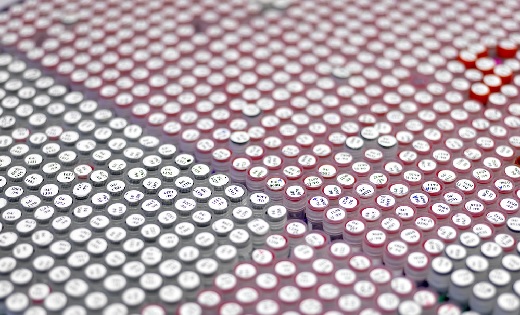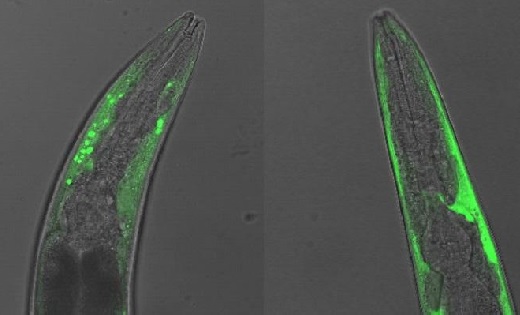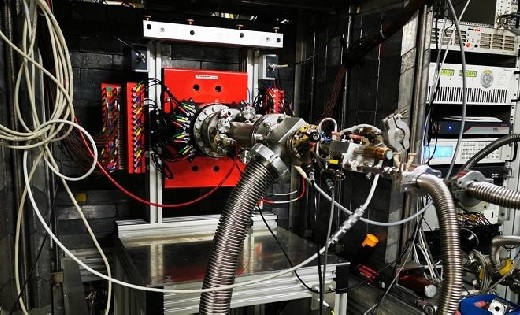Research Round-up – March 2020
Welcome to the latest instalment of our monthly feature series throwing the spotlight on our research success stories.
Research led by Professor Andrew Shepherd has shown how we’re losing polar ice quicker than previously thought

The strength of our research is in making a real and telling difference to the world around us, by working across traditional boundaries to find innovative solutions to some of the greatest challenges facing society today.
Here we highlight some of latest projects being pioneered by the expertise and efforts of the highly talented research community at Leeds.
From grant awards to examples of outstanding interdisciplinary work and best practice, we’re keen to showcase your research achievements. See the foot of this article for details of how you can get involved.
Featured in this month’s round-up:
- How Leeds is helping tackle coronavirus outbreak
- Leeds jointly launches first cancer coronavirus registry
- £2.8m funding awarded to help fight cancer
- Shining a light on international energy inequality
- Six-fold increase in polar ice losses since 1990s
- Scientists identify new target for Parkinson’s therapies
- New way of looking at flood defences
- Do we need a MMOM (Museum of Modern Memes)?
- Making electronics more energy-efficient
- New Research and Innovation Service website
- How to feature in future research round-ups
 Leeds has brought together its staff, facilities, research and networks to help tackle coronavirus
Leeds has brought together its staff, facilities, research and networks to help tackle coronavirus
How Leeds is helping tackle the coronavirus outbreak
As one of the largest research-focused universities, with a broad interdisciplinary base, we've been marshalling our world-leading expertise and equipment, as well as influential networks, in the collaborative fight against the virus.
We have also volunteered our campus, opening pathology and microbiology laboratories in the School of Medicine, and contributing staff and equipment to give additional capacity for diagnostic testing in support of Leeds Teaching Hospitals Trust.
We are providing support to the NHS through use of car parks and accommodation, joint working on IT and security, expertise and resources in screening, volunteers and equipment for national and regional screening initiatives, hardware for production of parts for ventilators, and specific research projects that use the specialist expertise within the academic community.
Groups across campus are also taking up the fight against the outbreak. Leeds Institute for Data Analytics (LIDA) is realigning its workforce to address covid-19 projects and has reached out across campus for skilled individuals to join these teams. LIDA, a partner of The Alan Turing Institute, is home to multidisciplinary teams of data scientists – many of whom already work on health-related projects, including the epidemiologies of heart disease and cancer.
Professor Paul Stewart, Executive Dean of the Faculty of Medicine and Health, said: “This Government has set out a strong commitment to tackle covid-19 with science, innovation and a strong evidence base at its core.
“The use of patient data and linkage across partner organisations, analysed through our flagship Leeds Institute for Data Analytics, offers a powerful way to understand covid-19 infection, from transmission, identification of high risk patients to novel interventions.”
Leeds jointly launches first cancer coronavirus registry
Oncologists from Leeds, Birmingham and Oxford have launched the first cancer coronavirus registry in the world.
The registry will track how cancer patients, who have tested positive for COVID-19, will be impacted.
The UK Coronavirus cancer monitoring scheme is a national project, which will pioneer the use of clinician-led reporting to track cancer patients and inform treatment pathways.
The aim of the monitoring system is to ensure that high quality cancer care is being delivered across the country to safeguard patients.
The project will collect information from across the UK about the prevalence of covid-19 infections with associated anonymised data about the site of disease and mortality. This will be achieved through a newly formed network of cancer covid-19 response reporting clinicians, covering 82% of the UK's cancer centre network.
Dr Vinton Cheng, Academic Clinical Lecturer and Researcher in the Leeds Institute for Medical Research at Leeds, is the project’s ethics and regulatory affairs lead. He said: "As an oncologist, patients with cancer need to know that the NHS will continue to look after them and will identify and learn from cases. The monitoring system is the first step to help the NHS achieve these aims for cancer patients."
 Funding has been awarded to Dr Adel Samson to explore new treatments for cancer
Funding has been awarded to Dr Adel Samson to explore new treatments for cancer
£2.8m funding awarded to help fight cancer
University Academic Fellow, Dr Adel Samson, has been awarded £2.8m in funding from Transgene to develop new therapies for treating cancer.
Transgene is a biotech company that designs and develops virus-based immunotherapies.
The funding supports a multi-centre translational clinical trial, led by a team at Leeds and St James’s University Hospital. Dr Adel Samson is the Clinical Chief Investigator and also leads the translational laboratory science associated with the trial.
In this trial, patients with colorectal cancer liver metastases are administered an engineered oncolytic virus by intrahepatic artery infusion. The virus is engineered to directly kill cancer cells, whilst also enabling the production of a chemotherapeutic agent, within the tumour.
Dr Adel Samson, of the Leeds Institute for Medical Research (LIMR), said: “I hope that this study demonstrates the safety and efficacy of this treatment. By injecting through the hepatic artery, we aim to maximise the delivery of virus to tumour, whilst minimising systemic toxicity.”
 Extreme disparity in the use of energy among richer and poorer people has been uncovered in a new study
Extreme disparity in the use of energy among richer and poorer people has been uncovered in a new study
Shining a light on international energy inequality
Extreme disparity in the use of energy among richer and poorer people – both within countries and between them –has been uncovered in a new study.
The research, which is the first of its kind, has examined energy inequality for income classes across 86 countries, from highly industrialised to developing nations.
University researchers combined EU and World Bank data to calculate the distribution of energy footprints, as well as what energy-intensive goods and services different income groups spend their money on.
Their study, published in Nature Energy, shows that energy footprints grow with expenditure, and, therefore, are unequally distributed.
Among all the countries and income classes in the study, the top 10% consume roughly 20 times more energy than the bottom 10%.
Additionally, as income increases, people spend more of their money on energy-intensive goods, such as package holidays or cars, leading to high energy inequality. Indeed, the researchers found that 187 times more vehicle fuel energy is used by the top 10% consumers relative to the bottom 10%.
Lead author Yannick Oswald, PhD researcher in the School of Earth and Environment at Leeds, said: “We found that none of the energy categories are free from energy inequality or benefit populations to an equal degree.
“Transport-related consumption categories are among the least equal. Without reducing the energy demand of these services, either through frequent-flyer levies, promoting public transport and limiting private vehicle use, or alternative technology, such as electric vehicles, the study suggests that as incomes and wealth improve, our fossil fuel consumption in transport will skyrocket.”
 This image shows an iceberg with melt point in the Bellingshausen Sea, Antarctica
This image shows an iceberg with melt point in the Bellingshausen Sea, Antarctica
Six-fold increase in polar ice losses since 1990s
Greenland and Antarctica are losing ice faster than in the 1990s and are both tracking the Intergovernmental Panel on Climate Change’s worst-case climate warming scenario.
As a result, this will lead to an extra 17 centimetres of sea level rise by 2100.
A team of 89 polar scientists from 50 international organisations have produced the most complete picture of polar ice sheet loss to date.
The Ice Sheet Mass Balance Intercomparison Exercise (IMBIE) team combined 26 separate surveys to compute changes in the mass of the Greenland and Antarctic ice sheets between 1992 and 2018.
Altogether, data from 11 different satellite missions were used, including measurements of the ice sheets’ changing volume, flow and gravity.
The findings, published in two companion articles in Nature, show that Greenland and Antarctica lost 6.4 trillion tonnes of ice between 1992 and 2017 – pushing global sea levels up by 17.8 millimetres. Of the total sea level rise, 10.6 millimetres (60%) was due to Greenland ice losses and 7.2 millimetres (40%) was due to Antarctica.
The assessment, led by Professor Andrew Shepherd at Leeds and Dr Erik Ivins at NASA’s Jet Propulsion Laboratory in California, was supported by the European Space Agency (ESA) and the US National Aeronautics and Space Administration (NASA).
Professor Shepherd said: “Every centimetre of sea level rise leads to coastal flooding and coastal erosion, disrupting people’s lives around the planet.
“If Antarctica and Greenland continue to track the worst-case climate warming scenario, they will cause an extra 17 centimetres of sea level rise by the end of the century. This would mean 400 million people are at risk of annual coastal flooding by 2100.
“These are not unlikely events with small impacts; they are already underway and will be devastating for coastal communities.”
 New research looks at a previously overlooked element of Parkinson’s disease
New research looks at a previously overlooked element of Parkinson’s disease
Scientists identify new target for Parkinson’s therapies
A master control region of a protein linked to Parkinson’s disease has been identified for the first time.
The finding, made by researchers in the Astbury Centre, provides a new target for the development of therapies to try and slow down or even prevent the disease.
Parkinson’s affects more than 10 million people across the world, causing neurodegeneration and difficulties with movement, which increase over time.
The study focused on a protein called alpha-synuclein, which is linked to the onset and progression of Parkinson’s disease. Alpha-synuclein is found in healthy cells in the nervous system, but problems arise when it clumps together – or aggregates – into plaques and then disrupts normal function.
A short region of the alpha-synuclein protein, known as NAC, was assumed to be key to Parkinson’s disease, as it is particularly aggregation-prone. The study found that two regions outside of NAC play a critical role in controlling amyloid formation of alpha-synuclein.
By removing these regions in a laboratory setting, they switched off aggregation in a laboratory despite NAC still being present.
The study explored the importance of these ‘master controller’ regions by testing in the muscle cells of nematode worms and monitored aggregation of the proteins and their effects on mobility.
When the control regions were deleted in the worms, alpha-synuclein no longer formed aggregates, and the worms were healthier and more mobile, even in old age, compared to worms expressing the normal alpha-synuclein protein.
Investigator Professor Sheena Radford, Director of the Astbury Centre, said: “In trying to tackle diseases like Parkinson’s, the first problem is identifying the key areas to target with small-molecules or protein-based medicines, as these proteins do not have a fixed structure, ruling out traditional methods of structure-based drug design.
“Finding a previously overlooked target to focus future efforts on is very exciting."
 Academics have developed a new way to examine the effectiveness of flood defences
Academics have developed a new way to examine the effectiveness of flood defences
New way of looking at flood defences
University mathematicians alongside French civil engineers have developed a new way to visualise and analyse complex flood-protection schemes.
This method looks away from equations and scientific language and instead involves a graphical display. It imagines the flood as a hypothetical lake two metres deep – the amount of water that needs to be contained in a river valley to prevent flooding.
The graphic is overlaid with the various options necessary to hold back or to capture the flood waters, and how much each option will cost.
The work is a collaboration between Professor Onno Bokhove, Professor Mark Kelmanson and Dr Tom Kent, from the School of Mathematics, together with civil engineers from Université Grenoble Alpes.
Professor Bokhove said: “This work started from a challenge thrown down by a representative of the Environment Agency in the UK, who said mathematicians always produce equations and he wanted something that was more accessible – a way of communicating complex ideas clearly and simply, to allow the science underlying flood mitigation to be understandable to the wider fraternity involved in policy making.”
Do we need a MMOM (Museum of Modern Memes)?
Arran Rees, PhD researcher in the School of Fine Art, History of Art and Cultural Studies, recently talked to the BBC about memes and museums.
Arran’s research, funded by the White Rose College of the Arts & Humanities (WRoCAH), looks at how museums can develop methods for collecting social media content. Throughout his research, Arran has discussed memes as digital cultural heritage on several occasions.
He has also worked with Phillip Roberts, the Associate Curator of Photography and Photographic Technology at the National Science and Media Museum in Bradford. The museum explores the science and culture of image and sound technologies, and together Arran and Phillip are looking at how the museum might collect memes.
After spending a month working at ACMI, the Australian Centre for Moving Image, Arran wrote a short article for their website last year on preserving memes. This was subsequently picked up by digital journalist Ian Casey, who asked Arran to talk a bit more about the memes he thinks should be preserved and what museums are currently doing with them.
Now that people are staying at home, memes are being widely circulated on the internet and coming into people's lives more and more by the day. In a short film on the BBC website, Arran talks about some of his reasons for archiving memes in museums.
He said: “Memes should be considered as part of our cultural heritage. I think that museums and archives around the world should be collecting them.
“They are a mixture of still and moving images, often overlaid with text, expressing funny, humorous commentary on people, places or events.
“I have been working with the National Science and Media Museum to look at memes as examples of how photographic technology and the use of photographs have changed because of the internet.”
Arran also talks about his top five memes, including ‘Woman yelling at cat’, ‘RuPaul’s Drag Race’ and the Museum of English Rural Life’s ‘Absolute Unit’.
Watch the 'Memes should be archived in a museum’.
 Can we make consumer electronics more energy-efficient by capturing electrons' spin-state?
Can we make consumer electronics more energy-efficient by capturing electrons' spin-state?
Making electronics more energy-efficient
Scientists have made a breakthrough in the development of a new generation of electronics that will require less power and generate less heat.
It involves exploiting the complex quantum properties of electrons – in this case, the spin state of electrons.
In a world first, the researchers have announced in the journal Science Advances that they have created a ‘spin capacitor’ that is able to generate and hold the spin state of electrons for several hours. Previous attempts have only ever held the spin state for a fraction of a second.
In electronics, a capacitor holds energy in the form of electric charge. A spin capacitor is a variation on that idea: instead of holding just charge, it also stores the spin state of a group of electrons – in effect it ‘freezes’ the spin position of each of the electrons.
By capturing the spin state, it might be possible to develop new devices that store information so efficiently that storage devices could get very small. A spin capacitor measuring just one square inch could store 100 Terabytes of data.
Dr Oscar Cespedes, from the School of Physics and Astronomy,supervised the research. He said: “This is a small but significant breakthrough in what could become a revolution in electronics driven by exploitation of the principles of quantum technology.”
New Research and Innovation Service website
The Research and Innovation Service website has been redeveloped, bringing it up to date and providing a wide range of advice and support for colleagues across campus.
The website covers all aspects of research activity, from identifying research funding opportunities through to advice on developing a proposal and managing grants, as well as support for developing impact and public engagement activities.
The site has a dedicated EU funding section and detailed guidance on research ethics and outputs.
You can also find up-to-date contact details for the Research and Innovation Service teams and Faculty Research and Innovation Offices.
How to feature in future research round-ups
Please contact Internal Communications if you or one of your colleagues would like to appear in this monthly feature.
Posted in: University newsResearch and innovation